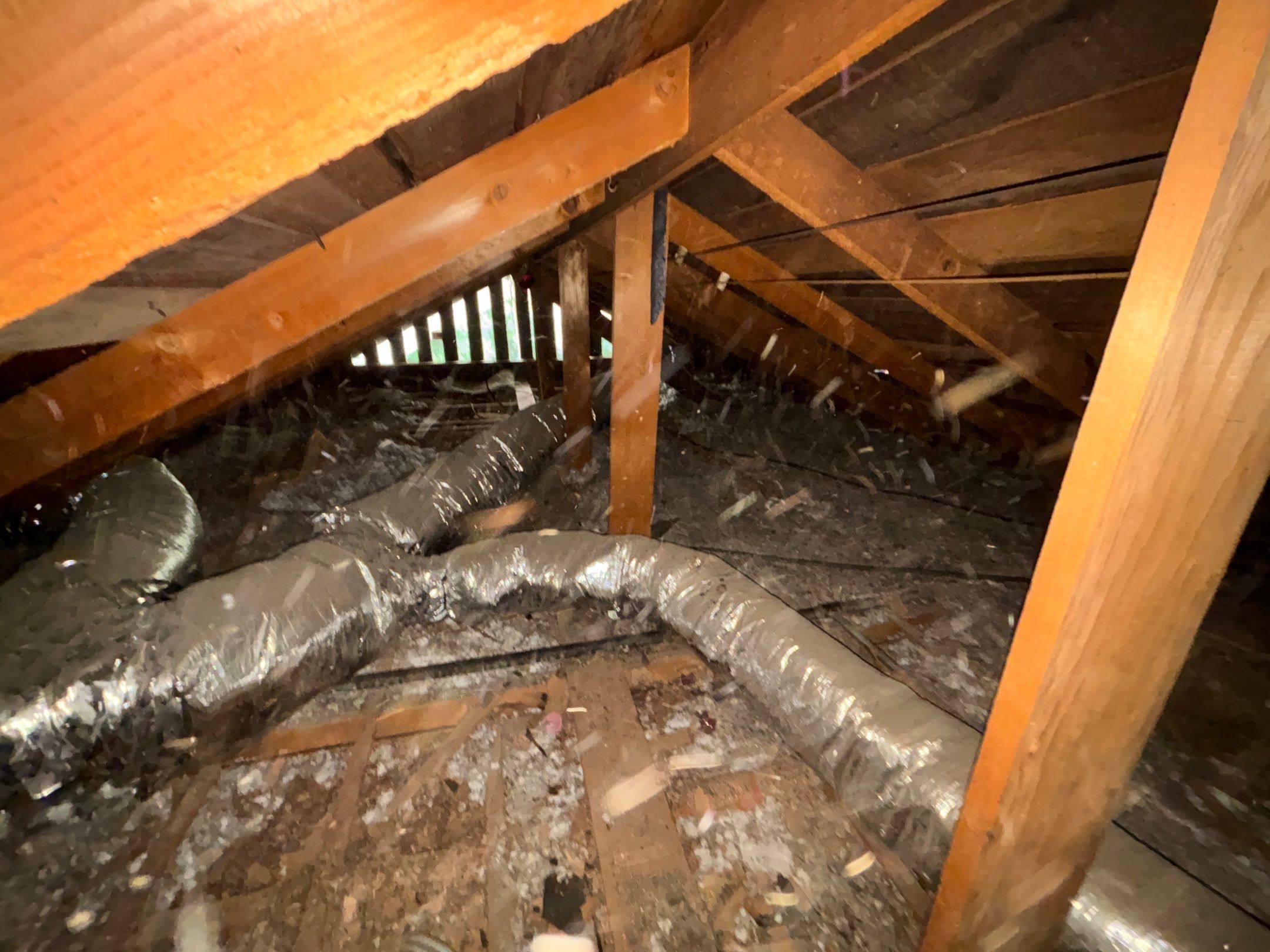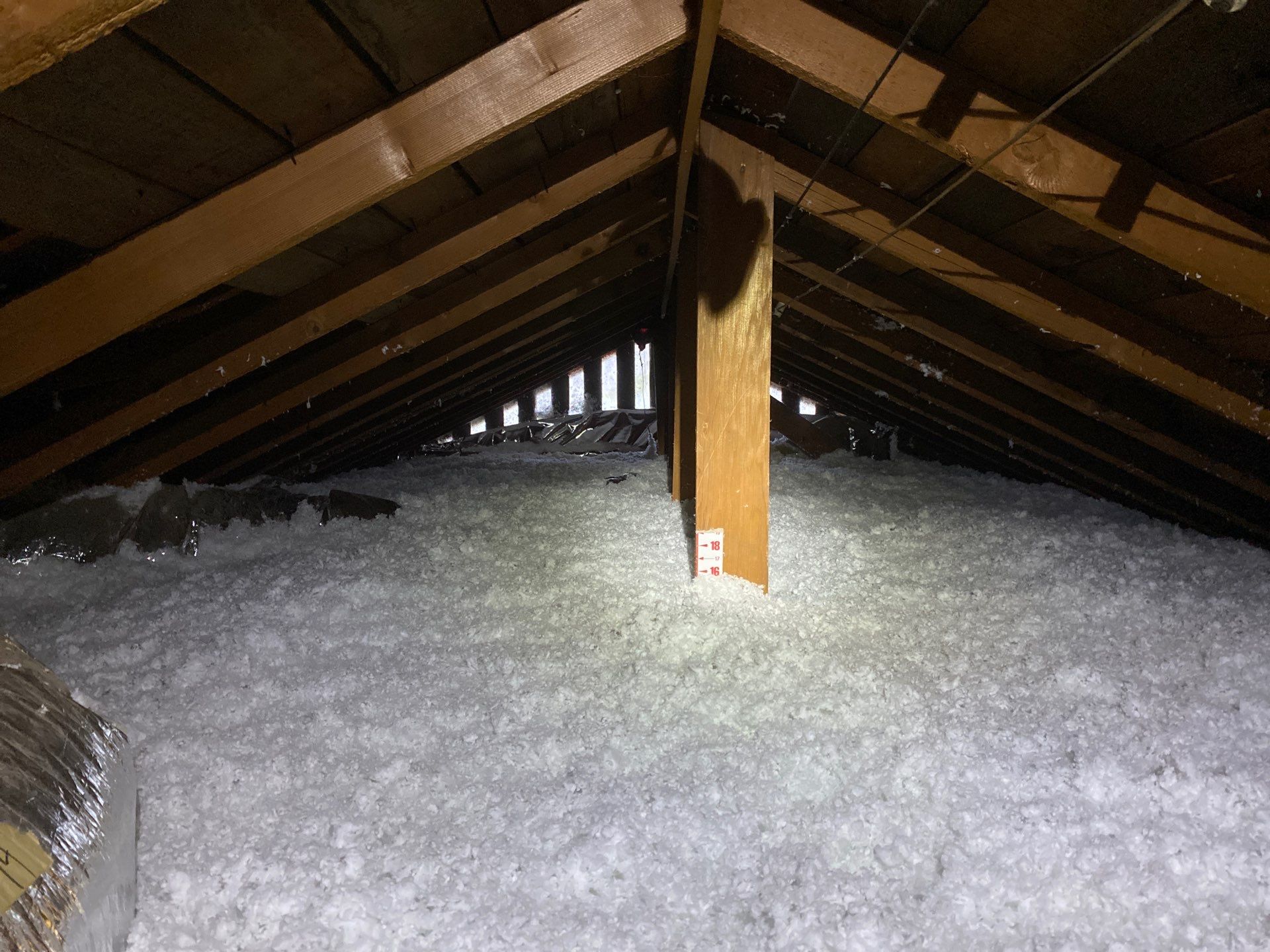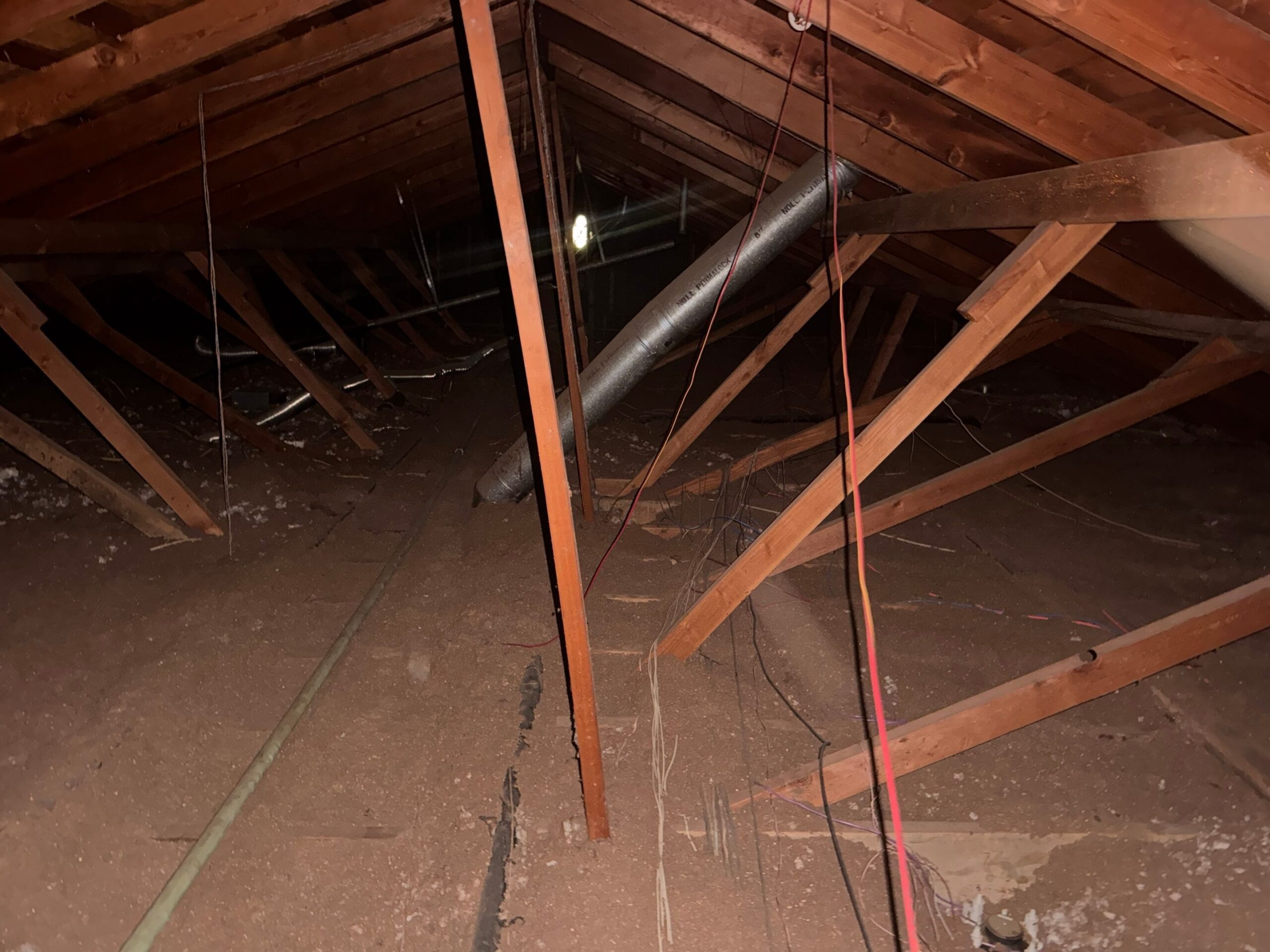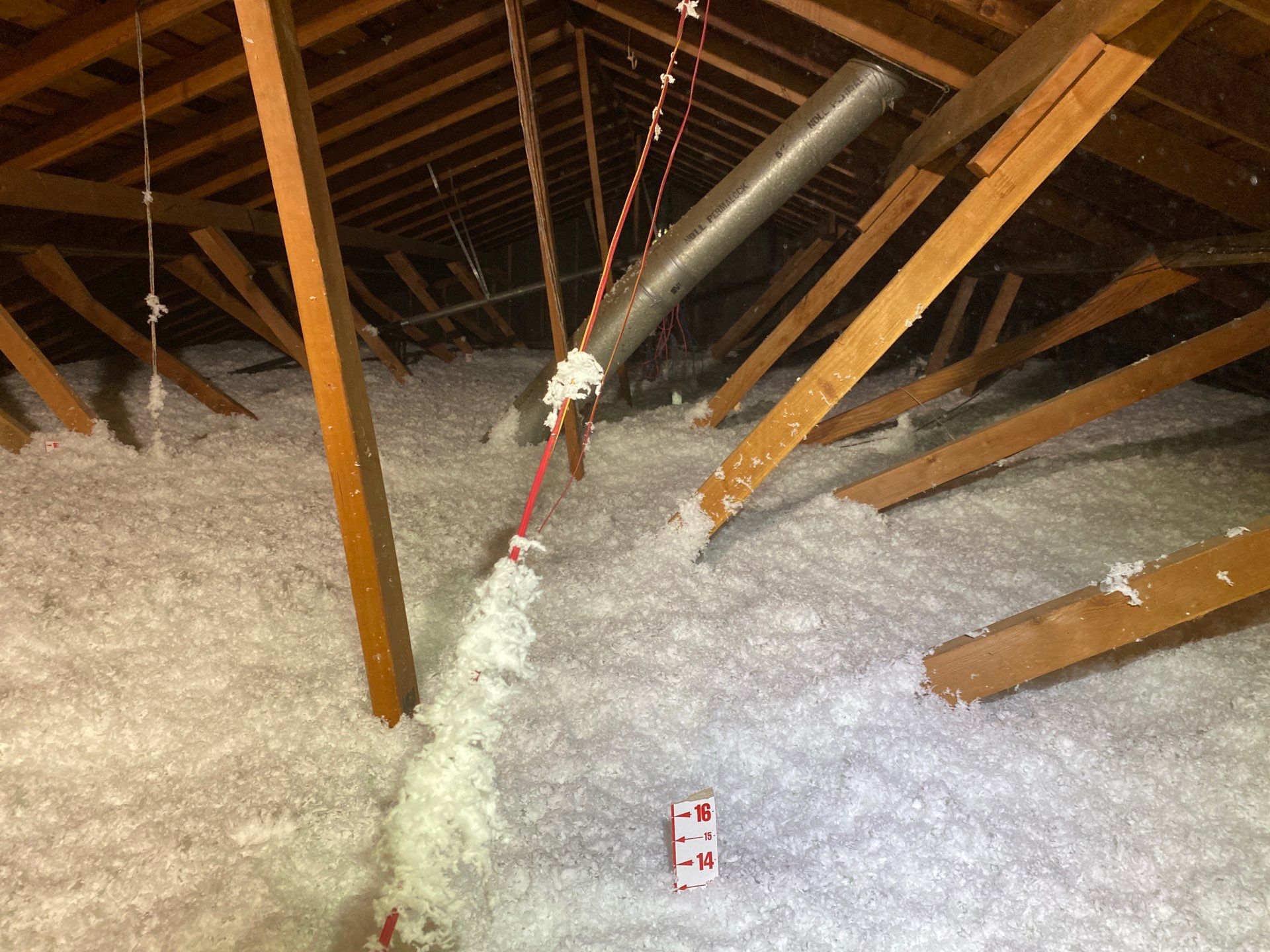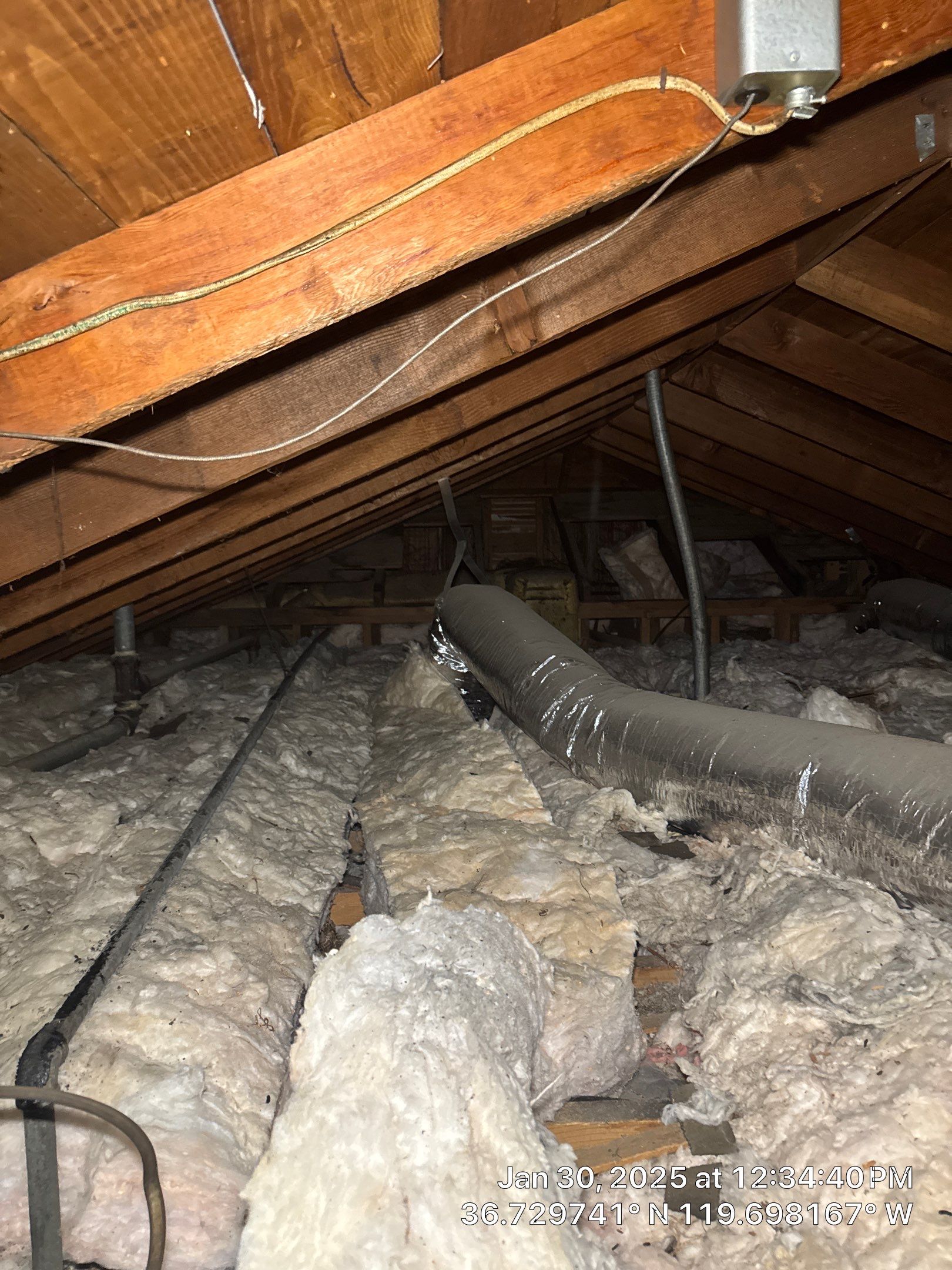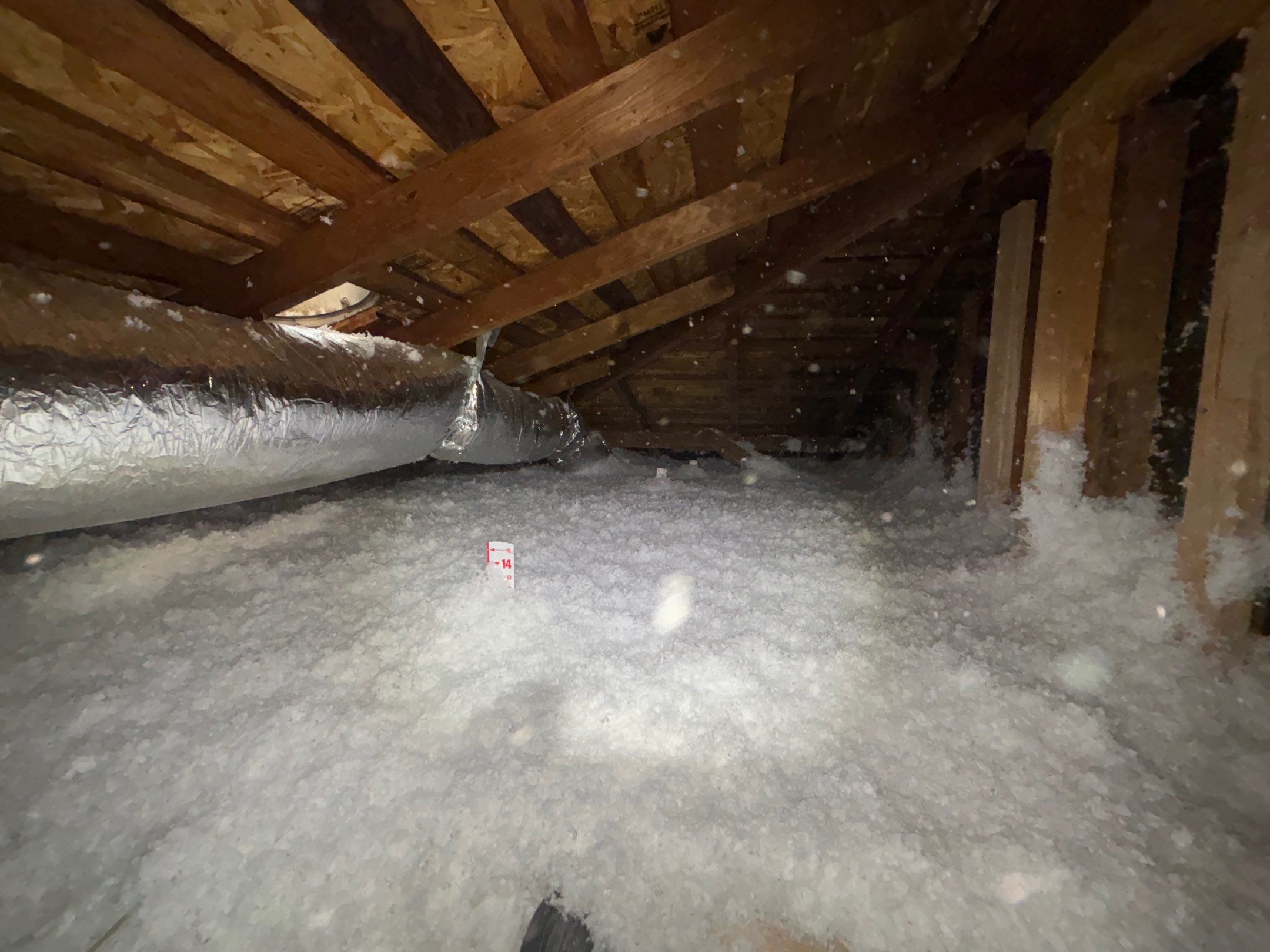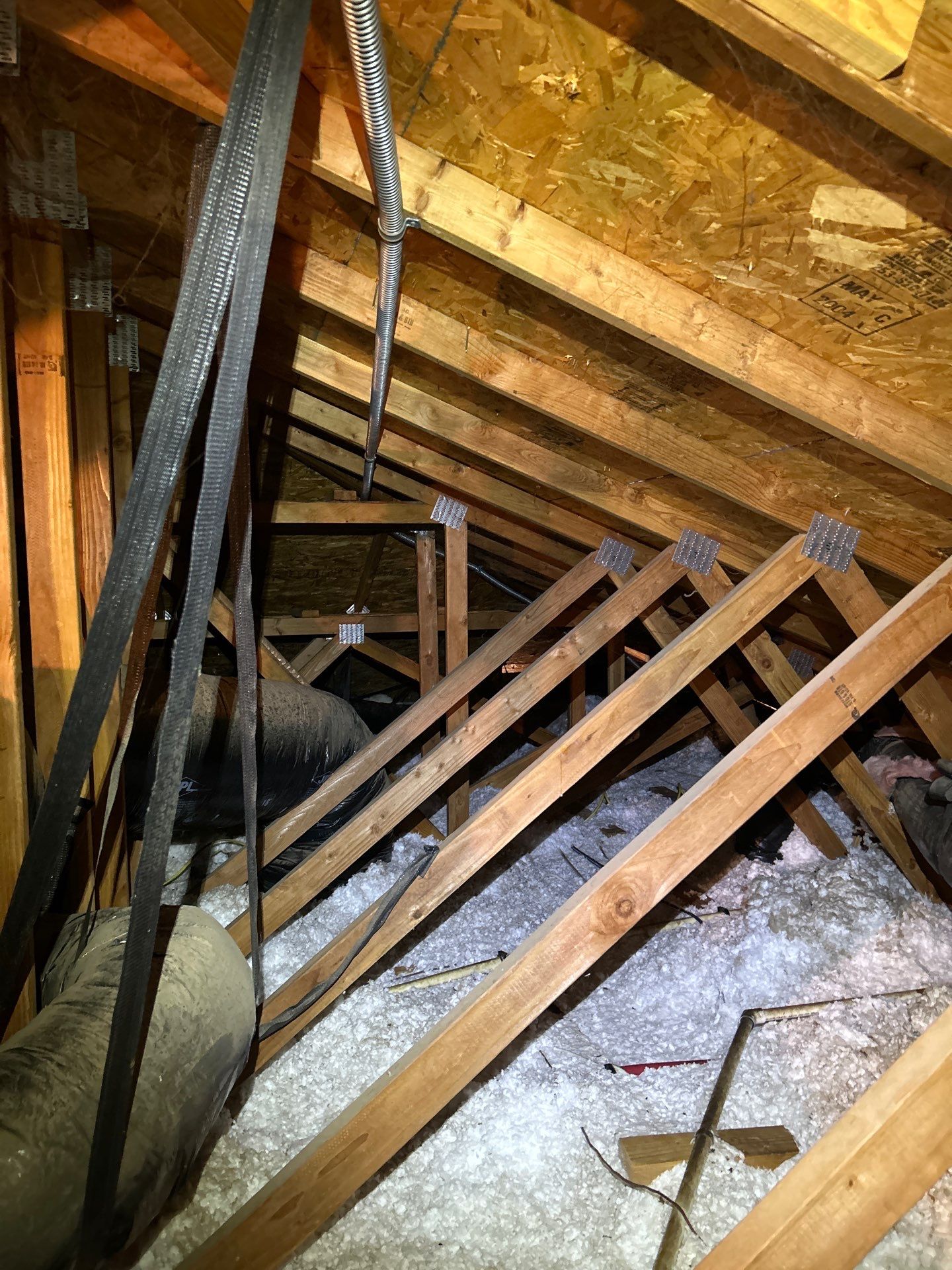Tyson Insulation Before & After Photos
Click on a photo to enlarge.
Jeff reached out to us because his home in Fresno was struggling to stay cool, even with the AC running frequently. High energy bills and uneven indoor temperatures signaled a major issue in his attic. Upon inspection, we found only 2 inches of old cellulose insulation, which was far below recommended levels. Additionally, there was significant air leakage and debris buildup, reducing overall efficiency.
To restore Jeff’s attic, we began by safely extracting and disposing of the old insulation. Next, we cleaned and sanitized the attic space using Nisus DSV, a powerful disinfectant that eliminates bacteria, viruses, and contaminants. To prevent air from escaping between the attic and the living areas, we meticulously air-sealed all major gaps, including plumbing and wiring penetrations, registers, and top plates. We also ensured proper attic ventilation by clearing soffit vents and sealing off any potential rodent entry points.
Once the attic was prepped, we installed premium blown-in fiberglass insulation to an R38 level, adding significant thermal protection. With this complete attic restoration, Jeff’s home will now maintain a more consistent indoor temperature, improve air quality, and see a reduction in heating and cooling costs for years to come.
Michelle contacted us because her home was struggling to stay cool in the summer and warm in the winter. After inspecting her attic, we found the culprit—only 3 inches of old cellulose insulation, which had settled over time and lost its effectiveness. With such minimal insulation, heat was easily escaping in the winter and seeping in during the summer, forcing her HVAC system to work overtime.
To fix the issue, we performed a full attic restoration. First, we removed all of the existing cellulose insulation and thoroughly cleaned the attic, eliminating dust, allergens, and debris. Next, we air-sealed all major leakage points, including wire penetrations, plumbing gaps, and top plates, using closed-cell foam. This step is crucial in preventing conditioned air from escaping into the attic and improving overall energy efficiency.
Once the attic was properly sealed, we installed a fresh layer of premium insulation, bringing it up to the recommended energy efficiency level. With the new insulation in place, Michelle’s home will now stay comfortable year-round while reducing strain on her HVAC system. She can expect lower energy bills, improved indoor air quality, and a more consistent indoor climate.
Jeff reached out to us because his home was struggling to maintain a comfortable temperature, causing his HVAC system to run excessively. After inspecting his attic, we quickly identified the root of the problem—his attic was under-insulated with R19 batting. Unlike blown-in insulation, batting often leaves gaps where air can flow freely between the pieces, leading to significant energy loss and poor climate control inside the home.
To resolve this, we performed a full attic restoration. We started by removing the existing batts and thoroughly cleaning the attic to eliminate dust, allergens, and contaminants. We then air-sealed all penetrations, including top plates, plumbing and wiring holes, and other potential leakage points, using closed-cell foam. Proper air sealing is crucial, especially when transitioning from batting to a more effective insulation method, as it prevents unwanted air exchange between the attic and living spaces.
Once the attic was prepped and sealed, we installed brand-new R19 batting insulation, ensuring that each piece was properly fitted to minimize gaps. Additionally, we took extra care to seal around the edges and junctions where air leaks were most likely to occur, significantly improving the home’s thermal efficiency.
As a result, Jeff’s home is now much more energy-efficient, with improved temperature control and reduced HVAC strain. He will experience lower energy bills and a more comfortable home for years to come.
Jeffrey was in the middle of a home remodel when he discovered his attic had zero insulation—leaving his home completely exposed to extreme temperatures. Without proper insulation, his newly renovated space wouldn’t retain heat in the winter or stay cool in the summer, leading to high energy costs. To ensure his home would be as efficient and comfortable as possible, we stepped in to install R38 fiberglass insulation.
We blew in premium fiberglass insulation throughout the attic, bringing it up to the recommended R38 level for maximum thermal efficiency. This upgrade will help regulate indoor temperatures, reduce strain on the HVAC system, and lower energy bills. Now, Jeffrey’s remodel is not only visually stunning but also well-insulated for year-round comfort and energy savings.
When Beverly reached out to us, she was dealing with an uncomfortable home and suspected her attic was to blame. Upon inspection, we found only 5 inches of old, ineffective fiberglass insulation in her attic—far below the recommended level. Even worse, there was clear evidence of a rodent infestation, including droppings and nesting materials. These unwanted guests were not only contaminating the attic but also compromising indoor air quality.
To restore her attic and create a healthier home, we started by safely extracting and disposing of all the contaminated insulation. We then performed a deep cleaning and sanitation process using Nisus DSV, a powerful disinfectant that eliminates bacteria, viruses, and odors left behind by rodents. Next, we air-sealed gaps and entry points with closed-cell foam to prevent future infestations and stop unwanted airflow between the attic and the living space.
Once the attic was thoroughly cleaned and sealed, we installed new premium fiberglass insulation, bringing Beverly’s attic up to the recommended R38 level. This upgrade will keep her home comfortable year-round while significantly lowering her heating and cooling costs. Now, with a properly insulated and rodent-free attic, Beverly can enjoy a healthier, more energy-efficient home for years to come.

